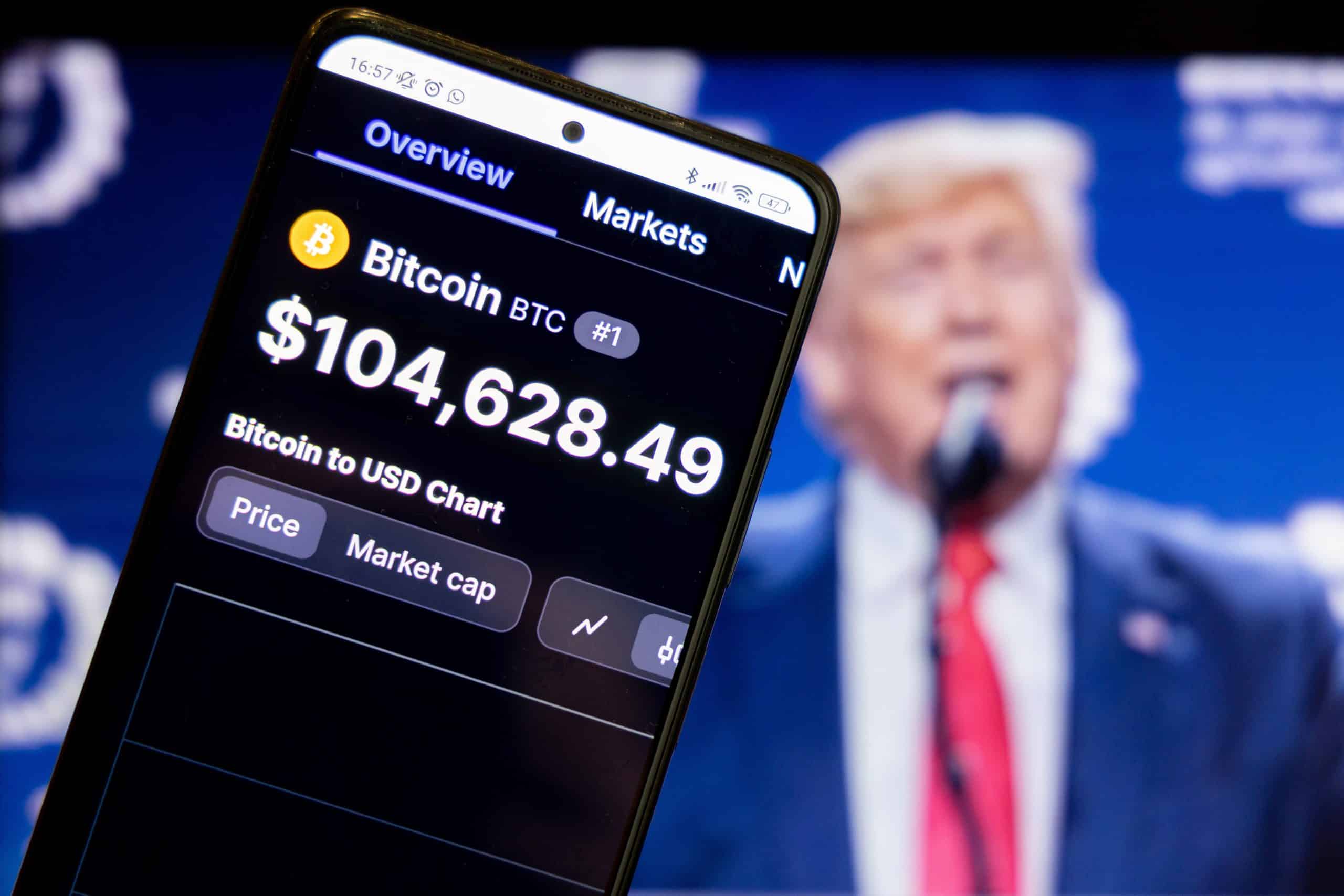Bitcoin, the leading cryptocurrency, is demonstrating relative stability as we enter May 2025, despite global economic uncertainties and increasing regulatory scrutiny. Following the approval of several Bitcoin spot Exchange Traded Funds (ETFs) in the U.S. last year, institutional interest has surged—paving the way for what many consider the asset’s transition into mainstream finance.
Current Market Performance
As of May 5, 2025, Bitcoin is trading at approximately $94,352, with a total market capitalization of around $1.94 trillion and a 24-hour trading volume of $27.7 billion (source: CoinMarketCap). This places Bitcoin close to the key psychological resistance level of $100,000, which analysts identify as a crucial milestone. If broken, the next resistance lies near $107,000, while support levels are estimated at $92,000 and $85,000.
This price level represents a nearly 30% increase from the local low recorded in April 2025, driven largely by investor optimism and renewed capital inflow from institutional players.
The ETF Catalyst
The landmark approval by the U.S. Securities and Exchange Commission (SEC) in January 2024 of multiple spot Bitcoin ETFs is widely regarded as a turning point. On the first day of trading, the market saw more than 700,000 transactions and a total turnover exceeding $4.33 billion. The Grayscale Bitcoin Trust (GBTC) led with $2.1 billion in volume, while BlackRock’s iShares Bitcoin Trust drew approximately $1 billion in trades.
These ETFs allow investors to gain direct exposure to Bitcoin without the need to manage digital wallets or navigate crypto exchanges—essentially bridging the gap between traditional finance and decentralized assets.
Institutional Adoption Accelerates
Companies such as MicroStrategy have doubled down on their Bitcoin strategies. As of April 2025, the firm holds 553,555 BTC, valued at nearly $37.9 billion. Similarly, hedge funds and pension portfolios are gradually allocating small percentages of their holdings into Bitcoin, viewing it as a hedge against inflation and monetary policy uncertainty.
BlackRock CEO Larry Fink recently stated that “Bitcoin is no longer just a speculative asset—it’s a recognized store of value in a changing macroeconomic landscape.”
Regulatory Outlook: A Fork in the Road
Despite the optimism, the crypto market is bracing for additional regulatory developments. The SEC is currently reviewing applications for Ethereum spot ETFs and evaluating stablecoin frameworks. Additionally, global bodies such as the G20 and IMF are discussing cross-border digital asset regulations to prevent misuse, ensure investor protection, and encourage innovation.
While increased regulation could bring clarity and legitimacy, some investors fear excessive oversight could stifle growth and deter retail participants.
Forecasts and Risks Ahead
Looking ahead, analysts are divided on Bitcoin’s trajectory. Optimistic forecasts from institutions like Standard Chartered suggest Bitcoin could reach $150,000–$200,000 by the end of 2025, fueled by ETF-driven inflows and broader acceptance. On the flip side, risks remain—including geopolitical tensions, central bank interest rate shifts, and potential tax policy changes affecting crypto holdings.
Technical analysts are also monitoring on-chain metrics such as wallet activity, mining difficulty, and exchange reserves, which currently show bullish signs—suggesting
reduced selling pressure from long-term holders.
Conclusion: Strategic Patience or FOMO?
Bitcoin’s journey in 2025 reflects a maturing market navigating between innovation and institutionalization. As more investors view Bitcoin as a long-term asset class rather than a speculative tool, the focus is shifting from short-term price action to broader adoption metrics and regulatory integration.
Whether you’re a retail investor, financial advisor, or institutional decision-maker, staying informed on both the market data and the evolving legal landscape is now more crucial than ever.
Comparison, examination, and analysis between investment houses
Leave your details, and an expert from our team will get back to you as soon as possible
* This article, in whole or in part, does not contain any promise of investment returns, nor does it constitute professional advice to make investments in any particular field.
To read more about the full disclaimer, click here- orshu
- •
- 9 Min Read
- •
- ago 1 hour
 Restaurant Stocks Under Pressure: Only McDonald’s and Shake Shack Buck the Trend
Restaurant Stocks Under Pressure: Only McDonald’s and Shake Shack Buck the Trend
It’s been a turbulent week for restaurant stocks, with the sector broadly underperforming amid mounting macroeconomic pressures and shifting consumer
- ago 1 hour
- •
- 9 Min Read
It’s been a turbulent week for restaurant stocks, with the sector broadly underperforming amid mounting macroeconomic pressures and shifting consumer
- orshu
- •
- 7 Min Read
- •
- ago 2 hours
 Foreign Ownership in U.S. Equities Hits Record High: Strategic Opportunity or Structural Risk?
Foreign Ownership in U.S. Equities Hits Record High: Strategic Opportunity or Structural Risk?
As of mid-2025, foreign investors now hold 18% of U.S. corporate equities – an all-time high in recorded history. This
- ago 2 hours
- •
- 7 Min Read
As of mid-2025, foreign investors now hold 18% of U.S. corporate equities – an all-time high in recorded history. This
- orshu
- •
- 8 Min Read
- •
- ago 2 hours
 Breaking Down the S&P 500 Rally: Sector-by-Sector Analysis of Earnings vs. Valuation Expansion
Breaking Down the S&P 500 Rally: Sector-by-Sector Analysis of Earnings vs. Valuation Expansion
The 8.6% year-to-date gain in the S&P 500 during 2025 isn’t the result of a single factor—it’s a combination of moderate earnings
- ago 2 hours
- •
- 8 Min Read
The 8.6% year-to-date gain in the S&P 500 during 2025 isn’t the result of a single factor—it’s a combination of moderate earnings
- orshu
- •
- 5 Min Read
- •
- ago 4 hours
 Tesla and LG Energy Ink $4.3 Billion Battery Supply Deal: Will the Agreement Accelerate Energy Storage Solutions?
Tesla and LG Energy Ink $4.3 Billion Battery Supply Deal: Will the Agreement Accelerate Energy Storage Solutions?
Tesla (NASDAQ:TSLA) and South Korean battery giant LG Energy Solution (KS:373220) have signed a significant contract worth $4.3 billion for the supply of lithium iron
- ago 4 hours
- •
- 5 Min Read
Tesla (NASDAQ:TSLA) and South Korean battery giant LG Energy Solution (KS:373220) have signed a significant contract worth $4.3 billion for the supply of lithium iron












